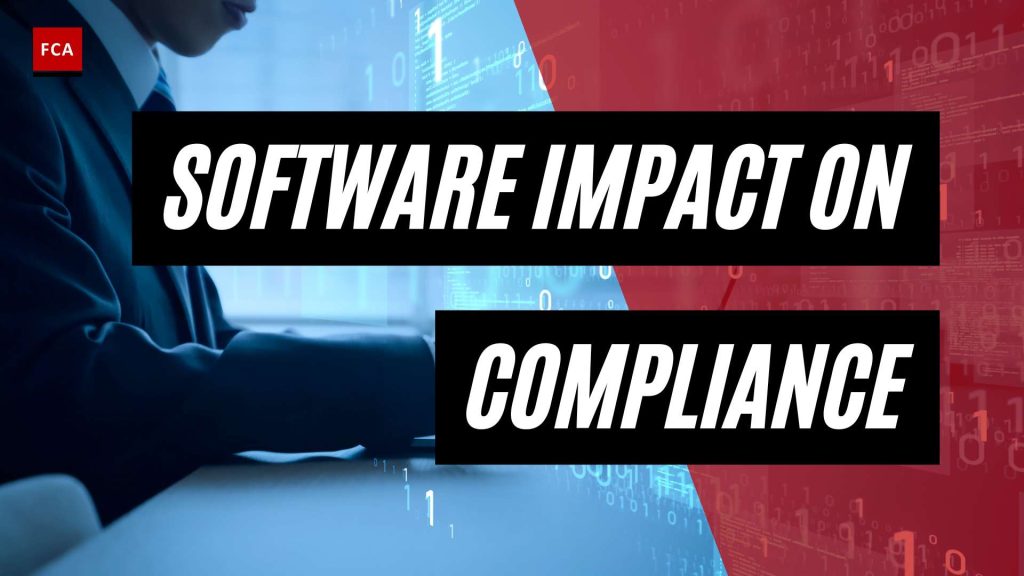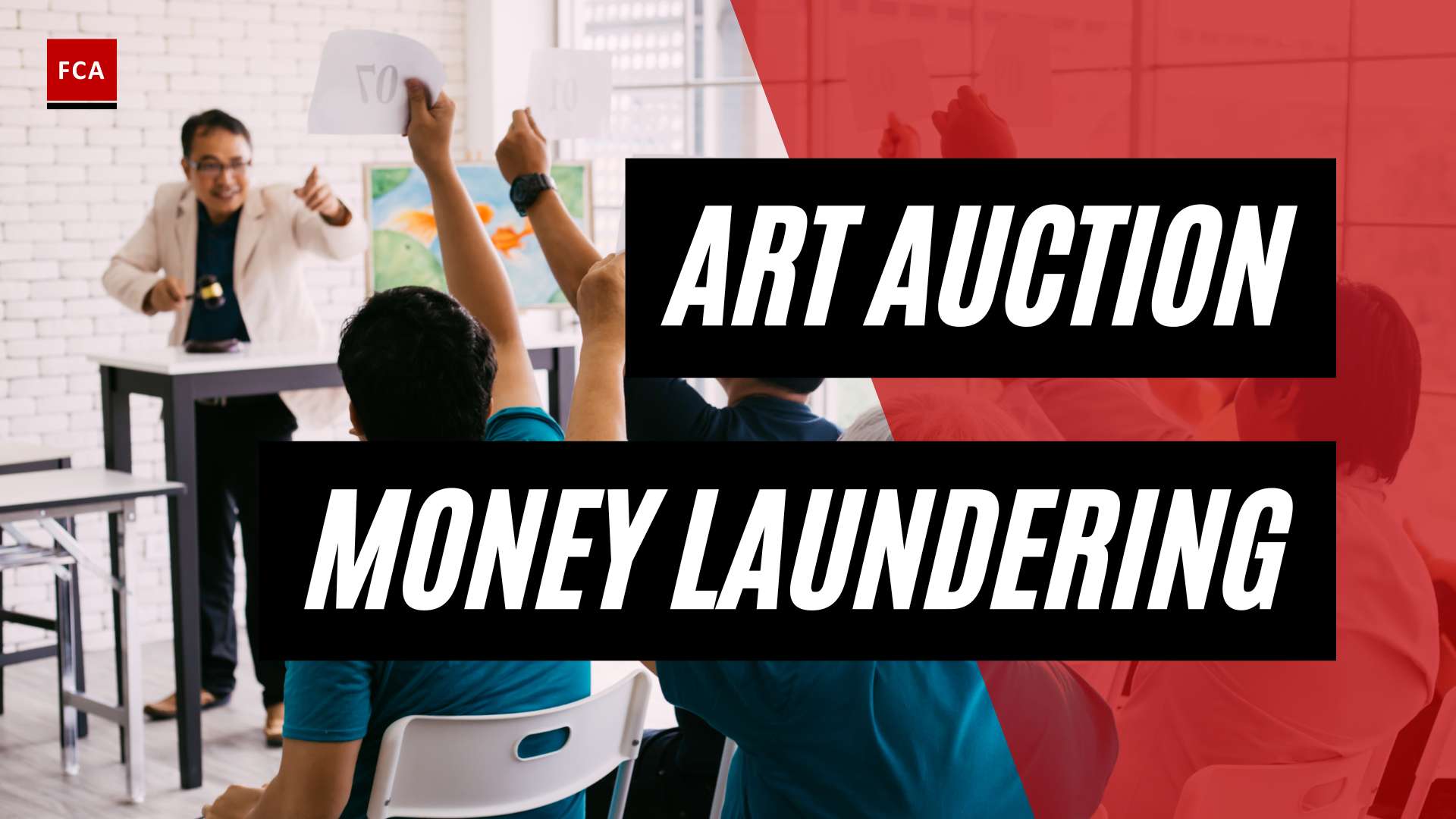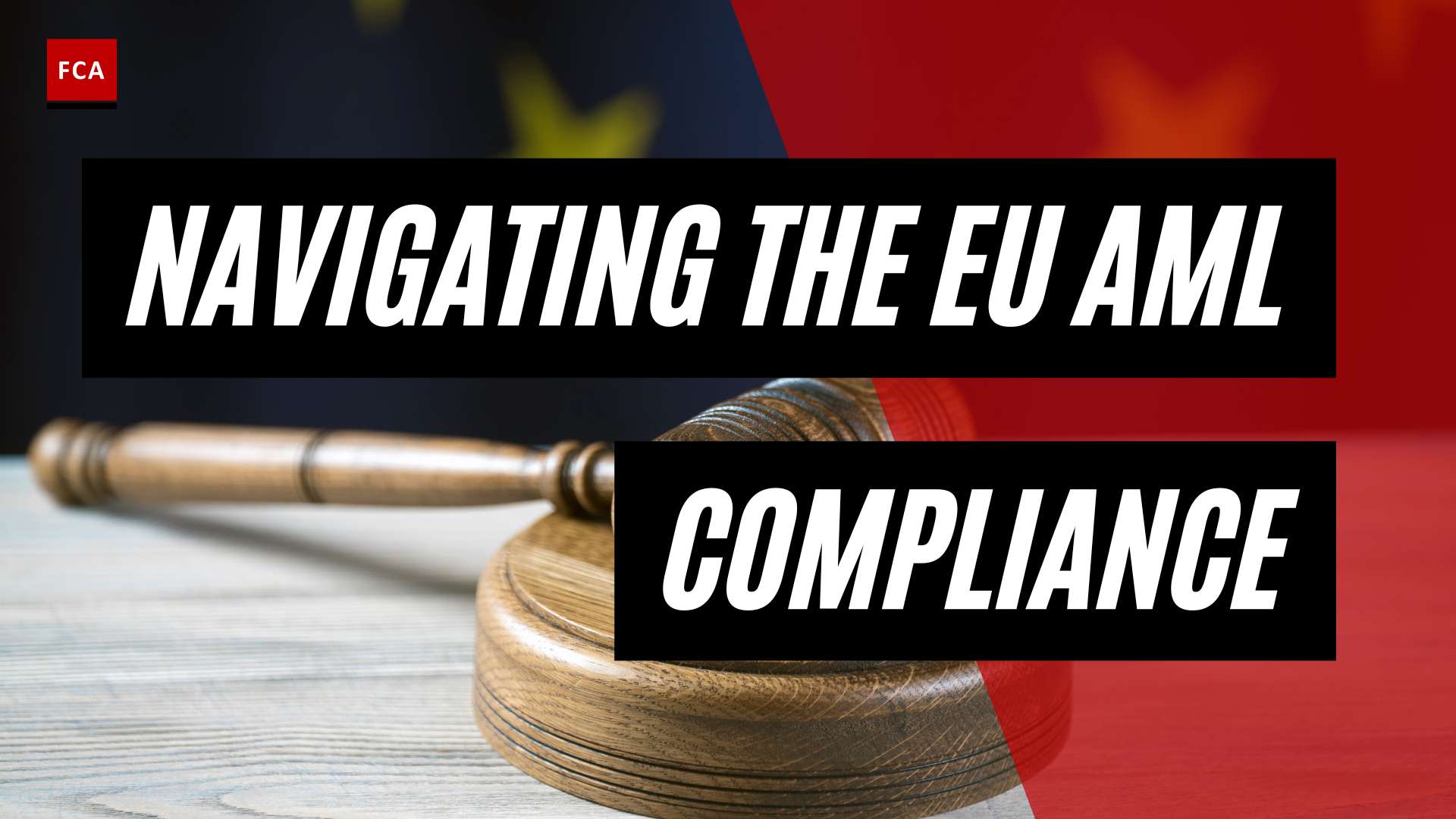Understanding AML Reporting Requirements
To effectively combat money laundering and other financial crimes, financial institutions must adhere to regulatory reporting requirements related to Anti-Money Laundering (AML) activities. AML reporting plays a crucial role in ensuring transparency, accountability, and the mitigation of risks associated with illicit financial activities. Let’s explore the importance of AML reporting and the evolving regulatory landscape.
Importance of AML Reporting
AML reporting is essential for financial institutions in fulfilling their compliance obligations and demonstrating their commitment to preventing money laundering. By reporting suspicious activities, institutions contribute to the collective efforts of combating financial crimes and maintaining the integrity of the financial system.
The best AML software systems offer a broad range of features, including regulatory reporting capabilities, allowing financial institutions to efficiently manage and report suspicious activities to regulatory authorities. These capabilities help institutions streamline their compliance processes, enhance operational efficiency, reduce manual errors, and improve the detection and reporting of suspicious activities.
By implementing advanced AML reporting software, financial institutions can better manage vast amounts of data, adapt to changing regulatory environments, and enhance overall AML compliance capabilities. This technology enables institutions to effectively monitor and report potential risks, detect money laundering activities, and ensure compliance with regulatory obligations (Financial Crime Academy).
Evolving Regulatory Landscape
AML compliance requirements are continually evolving, driven by changing regulatory landscapes and emerging financial crime trends. Financial institutions must stay abreast of these changes to ensure their AML reporting practices remain effective and compliant.
To adapt to the evolving regulatory landscape, financial institutions need to invest in sophisticated AML reporting software that can keep pace with changing requirements. This software should offer flexibility, scalability, and the ability to incorporate new regulatory guidelines and reporting frameworks. By leveraging technology and advanced analytics, financial institutions can enhance their risk management and compliance functions, staying ahead of emerging threats and regulatory expectations.
Comprehensive regulatory reporting training and ongoing professional development are essential for compliance professionals to stay informed about regulatory changes and reporting obligations. By remaining proactive and responsive to the evolving regulatory landscape, financial institutions can ensure their AML reporting practices align with the most current guidelines and industry best practices.
By understanding the importance of AML reporting and staying updated on the evolving regulatory landscape, financial institutions can effectively fulfill their compliance obligations and contribute to the global efforts against money laundering and financial crimes.
Benefits of AML Reporting Software
Implementing advanced AML reporting software offers numerous benefits for financial institutions and organizations in terms of compliance and risk management. These benefits include streamlining compliance processes, enhancing operational efficiency, and improving the detection and reporting of suspicious activities.
Streamlining Compliance Processes
AML reporting software helps financial institutions streamline their compliance processes by automating various tasks and workflows. Manual processes are time-consuming and prone to errors, making it challenging to meet regulatory reporting requirements efficiently. By leveraging technology, AML reporting software simplifies data collection, analysis, and reporting, enabling institutions to comply with AML regulatory compliance obligations more effectively.
With AML reporting software, financial institutions can centralize and standardize their compliance processes, ensuring consistency across various departments and locations. This streamlining of processes not only saves time but also reduces the risk of errors, improving overall compliance and reporting accuracy.
Enhancing Operational Efficiency
The use of AML reporting software enhances operational efficiency for financial institutions. Manual compliance processes often involve significant paperwork, which can be time-consuming and resource-intensive. AML reporting software automates many of these tasks, freeing up valuable time and resources for other critical areas of the organization.
By automating data collection, analysis, and reporting, AML reporting software eliminates the need for manual data entry and reduces the risk of human error. This automation allows compliance teams to focus on more value-added activities, such as investigating suspicious transactions and implementing effective risk mitigation strategies.
Furthermore, AML reporting software enables real-time monitoring and alerts for suspicious activities, ensuring timely detection and response. This proactive approach enhances operational efficiency by promptly identifying potential risks and enabling swift action to mitigate them.
Improving Detection and Reporting
One of the key advantages of AML reporting software is its ability to improve the detection and reporting of suspicious activities. Advanced AML software systems offer features such as transaction monitoring, watchlist screening, risk assessment, and case management. These capabilities enable financial institutions to efficiently manage and report suspicious activities to regulatory authorities.
By leveraging technologies like artificial intelligence (AI), machine learning, and data analytics, AML reporting software enhances the effectiveness and accuracy of AML compliance efforts. These technologies enable the software to analyze vast amounts of data, identify patterns, and detect anomalies that may indicate potential money laundering or other financial crimes.
With improved detection capabilities, financial institutions can promptly report suspicious activities to the appropriate regulatory authorities, fulfilling their compliance reporting obligations. This proactive approach helps prevent financial crimes, safeguard the integrity of the financial system, and protect the institution’s reputation.
In summary, investing in robust AML reporting software provides financial institutions with the tools necessary to streamline compliance processes, enhance operational efficiency, and improve the detection and reporting of suspicious activities. By leveraging technology and advanced features, organizations can effectively meet regulatory requirements, mitigate risks, and maintain a strong compliance posture.
Features of AML Reporting Software
AML reporting software is a critical tool for financial institutions and organizations to effectively manage their Anti-Money Laundering (AML) compliance efforts. These software solutions offer a range of features that help streamline processes, enhance operational efficiency, and improve detection and reporting of suspicious activities. Let’s explore some of the key features of AML reporting software:
Transaction Monitoring
Transaction monitoring is a fundamental feature of AML reporting software. It involves the analysis and scrutiny of financial transactions to identify potential money laundering or illicit activities. AML reporting software leverages sophisticated algorithms and rule-based systems to monitor transactions in real-time and detect any suspicious patterns or anomalies. By automating this process, financial institutions can efficiently identify and report potentially illicit activities to the relevant authorities.
Watchlist Screening
Watchlist screening is another important feature of AML reporting software. It involves cross-checking customer data against various watchlists, including government sanctions lists, politically exposed persons (PEP) lists, and known criminal databases. AML reporting software automates this process, enabling quick and accurate identification of individuals or entities with suspicious backgrounds or potential involvement in illicit activities. By screening against watchlists, financial institutions can ensure compliance with regulatory obligations and mitigate the risk of facilitating financial crime.
Risk Assessment
AML reporting software aids in conducting risk assessments by evaluating the potential risks associated with customers, transactions, and business relationships. This feature allows financial institutions to assign risk ratings to customers based on factors such as their location, transaction history, and affiliations. By assessing and categorizing risks, organizations can allocate resources more effectively and focus their efforts on higher-risk customers or activities.
Case Management
Case management is a crucial component of AML reporting software. It allows compliance teams to efficiently manage and document their investigations into suspicious activities. AML reporting software provides a centralized platform to track and document suspicious cases, ensuring that all relevant information and actions are recorded and easily accessible. This feature streamlines the investigative process, facilitates collaboration among team members, and enables the generation of comprehensive reports for regulatory purposes.
By leveraging the features of AML reporting software, financial institutions can enhance their AML compliance efforts and effectively manage and report suspicious activities. These software solutions enable efficient transaction monitoring, accurate watchlist screening, comprehensive risk assessments, and streamlined case management. By automating and optimizing these processes, organizations can better detect and prevent money laundering and other financial crimes.
To learn more about AML reporting software and its impact on compliance, continue reading our article on AML regulatory compliance.
Leveraging Technology in AML Reporting Software
AML reporting software leverages advanced technologies to enhance the effectiveness and accuracy of AML compliance efforts. By incorporating artificial intelligence (AI), machine learning (ML), data analytics, and automation, these software solutions enable financial institutions to better detect and prevent financial crimes. This section will explore two key technologies used in AML reporting software: artificial intelligence and machine learning, and data analytics and automation.
Artificial Intelligence and Machine Learning
Artificial intelligence (AI) and machine learning (ML) are revolutionizing AML reporting software. These technologies enable software solutions to analyze vast amounts of data quickly and effectively, identifying patterns and anomalies that may indicate suspicious activities. By learning from historical data, AI and ML algorithms can continuously improve their detection capabilities, enhancing the accuracy and efficiency of AML compliance efforts.
AI and ML algorithms can analyze customer behavior, transaction patterns, and other relevant data points to identify potentially fraudulent activities. These technologies can help financial institutions detect complex money laundering schemes, such as layering and smurfing, which may be challenging to identify through manual processes alone.
Moreover, AI and ML algorithms can assist in reducing false positives, a common issue in AML compliance. By fine-tuning the algorithms based on feedback and ongoing analysis, AML reporting software can minimize the number of false alerts, allowing compliance teams to focus their efforts on investigating genuine suspicious activities.
Data Analytics and Automation
Data analytics plays a crucial role in AML reporting software. These solutions can process and analyze large volumes of data, including customer information, transaction data, and external data sources, to identify potential risks and suspicious activities. By automating the analysis process, AML reporting software can save time and resources for financial institutions, enabling them to focus on high-risk areas and improve overall compliance efficiency.
Data analytics in AML reporting software can provide insights into customer behavior, transaction patterns, and other relevant metrics. This information helps compliance teams assess the level of risk associated with specific customers or transactions, allowing them to prioritize investigations and take appropriate actions.
Automation is another key feature of AML reporting software. By automating routine compliance tasks, such as data collection, transaction monitoring, and report generation, these solutions streamline the compliance process and reduce manual errors. Automation also ensures consistency in compliance efforts, as it eliminates the variability that can occur with manual processes.
Financial institutions can leverage AML reporting software’s data analytics and automation capabilities to enhance their risk management and compliance functions. These technologies enable organizations to analyze vast amounts of data more efficiently, detect suspicious activities accurately, and mitigate compliance risks effectively.
Incorporating advanced technologies like AI, ML, data analytics, and automation in AML reporting software empowers financial institutions to strengthen their AML compliance efforts. By leveraging these technologies, organizations can enhance their ability to detect and prevent financial crimes, ensure compliance with regulatory requirements, and safeguard their reputation in the market.
Selecting the Right AML Reporting Software
When it comes to AML regulatory compliance, selecting the right AML reporting software is essential for financial institutions to effectively manage their compliance obligations. With a wide range of options available in the market, it’s important to consider key factors and evaluate the top AML software solutions.
Key Considerations
When evaluating AML reporting software, financial institutions should consider the following key factors:
-
Compliance Requirements: Ensure that the software aligns with the regulatory reporting requirements specific to your jurisdiction. It should support the necessary reporting formats and provide comprehensive coverage of relevant regulations.
-
Features and Functionality: Look for AML software solutions that offer a broad range of features to effectively manage and report suspicious activities. These features may include transaction monitoring, watchlist screening, risk assessment, case management, and regulatory reporting capabilities (Financial Crime Academy).
-
Scalability and Flexibility: Consider the scalability and flexibility of the software to accommodate the growing needs of your institution. It should be able to handle large volumes of data and adapt to changing regulatory landscapes.
-
Integration Capabilities: Assess the software’s ability to integrate with existing systems and data sources within your institution. Seamless integration allows for efficient data flow and minimizes manual processes.
-
User-Friendliness: Look for software that is intuitive and user-friendly, with a clear and easy-to-navigate interface. This ensures that compliance teams can efficiently utilize the software without extensive training.
-
Data Security: Prioritize the security of sensitive financial information. The software should employ robust encryption and data protection measures to safeguard against potential cybersecurity threats.
-
Vendor Reputation and Support: Research the reputation and reliability of the software vendor. Consider their track record, customer reviews, and the level of technical support they provide.
Top AML Software Solutions
In the market, several AML software solutions stand out for their comprehensive features and capabilities. These include:
-
Refinitiv World-Check Risk Intelligence: This solution offers a vast database of profiles to screen individuals and entities against global sanctions, politically exposed persons (PEPs), and adverse media. It provides real-time alerts and customizable risk assessment features.
-
Trulioo: Trulioo offers advanced identity verification and anti-money laundering solutions. It leverages global data sources to verify customer identities and screen against watchlists and PEPs.
-
Lightico: Lightico’s AML software provides AI-enhanced document collection, data extraction and analysis, eSignature and consents, advanced identity verification tools, and the ability to collect customer data using eForms across various channels.
These software solutions have proven track records and are trusted by financial institutions worldwide. However, it’s important to thoroughly assess your institution’s specific needs and compliance requirements before making a final decision.
By considering key factors and exploring top AML software solutions, financial institutions can make informed choices that align with their compliance goals and effectively manage their AML reporting obligations. It’s crucial to select software that not only meets regulatory requirements but also enhances operational efficiency, reduces manual errors, and improves detection and reporting capabilities.
Implementing AML Reporting Software
Implementing AML reporting software is a critical step in ensuring compliance with regulatory reporting requirements and effectively managing anti-money laundering (AML) obligations. To ensure a successful implementation, it is important to follow best practices, have the necessary technical skills and support, and consider industry-specific solutions.
Best Practices for Implementation
When implementing AML reporting software, following best practices can help facilitate a smooth and efficient process. These best practices include:
-
Pre-built Rule Libraries and Collateral: AML software vendors should provide pre-built rule libraries and collateral to assist with the implementation process. These resources help clients set up the software more quickly and avoid starting from scratch. By leveraging these resources, implementation times can be significantly reduced, sometimes as short as two weeks, especially when coupled with cost-effective solutions and appropriate client-side resources prepared.
-
Technical Skills and Support: To manage complex implementation requests for AML software, it is essential to ensure that the vendor supports “out of the box” features like REST APIs and has in-house technical skills. This allows for smoother integration and support during the implementation process. Dedicated implementation consultants who can guide clients through the go-live stage are also considered a best practice approach for successful post-implementation outcomes (ComplyAdvantage).
-
Test and Iterate Approach: AML software implementation should follow a “test and iterate” mindset from the beginning. This approach allows for immediate integration and phased implementation, often utilizing sandboxing. Customer success managers play a crucial role in explaining new features and recommending optimizations based on their experience. This iterative approach ensures that the software is customized to meet the specific needs of the organization (ComplyAdvantage).
-
Adaptability to Changing Risks: A key consideration during implementation is the ability of the AML software vendor to adapt to changing risks over time. Effective vendors should be able to swiftly build new rules and support changes such as risk threshold adjustments as new risks emerge. This flexibility allows for the detection and prevention of emerging criminal behavior (ComplyAdvantage).
Technical Skills and Support
Implementing AML reporting software requires a combination of technical skills and support. Organizations should ensure that they have the necessary technical expertise to effectively integrate the software into their existing systems. This includes understanding APIs, data integration, and customization capabilities. If the organization lacks the in-house technical skills, it is important to work closely with the software vendor or consider engaging external technical consultants who can provide the required support.
Having a dedicated implementation team or consultant can greatly enhance the implementation process. These experts can guide the organization through the setup, configuration, and testing phases, ensuring that the software is aligned with the organization’s specific needs and objectives. Ongoing technical support is also crucial to address any issues or concerns that may arise post-implementation.
Industry-Specific Solutions
Consideration of industry-specific solutions is another important aspect of implementing AML reporting software. Regtech vendors with expertise in specific industries, such as digital banking or payments, can provide greater insights and out-of-the-box solutions to address industry-specific compliance challenges. Their industry-specific experience allows for proactive identification of creative solutions, expediting the implementation process for organizations. By leveraging these industry-specific solutions, organizations can benefit from tailored features and functionalities that cater to their unique compliance requirements.
By following best practices for implementation, ensuring technical skills and support, and considering industry-specific solutions, organizations can effectively implement AML reporting software. A well-implemented system enhances compliance efforts, improves operational efficiency, and helps organizations meet their regulatory reporting obligations.
The Role of AML Reporting Software in Compliance
As regulatory requirements surrounding anti-money laundering (AML) continue to evolve, financial institutions are increasingly turning to AML reporting software to ensure transparency, accountability, and compliance with regulatory reporting requirements. This software plays a vital role in combating money laundering and other financial crimes, protecting institutions from reputational and financial risks associated with illicit activities.
Transparency and Accountability
AML reporting software is crucial in ensuring transparency and accountability within the financial sector. It enables institutions to track and analyze transactions for any signs of suspicious behavior or illicit financing activities. By automating the process of gathering, analyzing, and reporting data, the software provides a comprehensive overview of financial activities, making it easier for institutions to identify and report suspicious transactions.
The software enables financial institutions to generate detailed reports that are compliant with AML regulatory guidelines. These reports demonstrate the institution’s commitment to regulatory compliance and serve as evidence of due diligence in identifying and mitigating money laundering risks (aml regulatory compliance). By maintaining transparency and accountability through robust reporting practices, financial institutions can build trust with regulators and stakeholders.
Protecting Reputation and Mitigating Risks
With the increasing complexity of financial transactions and the evolving nature of money laundering tactics, AML reporting software plays a vital role in enhancing the effectiveness of compliance programs and reducing the risks associated with financial crimes (Dow Jones). Implementing robust AML reporting software helps institutions safeguard their reputation by demonstrating a proactive approach to preventing money laundering and other illicit activities.
By leveraging advanced technologies such as artificial intelligence and machine learning, AML reporting software can effectively detect suspicious patterns and anomalies in financial transactions. This proactive approach allows institutions to identify potential risks and take appropriate action before any harm occurs. Timely detection and reporting of suspicious activities not only protect the institution but also contribute to the broader efforts of combating money laundering.
Moreover, the adoption of AML reporting software has become essential for financial institutions to comply with regulatory obligations and mitigate potential legal and financial risks associated with money laundering activities. Non-compliance with AML regulations can result in severe penalties, including financial sanctions and reputational damage. By implementing robust reporting software, institutions can stay ahead of regulatory changes and demonstrate their commitment to compliance.
In summary, AML reporting software plays a crucial role in ensuring transparency, accountability, and compliance with regulatory requirements. By utilizing advanced technologies and automating reporting processes, institutions can protect their reputation, mitigate risks associated with financial crimes, and contribute to the broader efforts of combating money laundering.
AML Reporting Software in Different Sectors
AML reporting software is a valuable tool that can be implemented across various sectors to enhance compliance efforts and combat financial crime. Let’s explore how this software is utilized in the healthcare, identity verification, and fraud prevention sectors.
Healthcare
In the healthcare sector, AML reporting software plays a crucial role in ensuring compliance with regulatory reporting requirements and safeguarding against financial crime. By leveraging AML software, healthcare organizations can seamlessly onboard patients, adapt to regional healthcare regulations, and meet shifting KYC/AML requirements (Persona). This software enables efficient and secure collection of identity information, helping build trust and safety for every touchpoint while automating and customizing KYC/AML programs (Persona).
With the ability to adapt to changing regulations, AML reporting software assists healthcare providers in monitoring and detecting abnormal transactions, ensuring compliance with AML guidelines. By automating risk management processes, financial institutions in the healthcare sector can effectively monitor customer information and detect suspicious activities.
Identity Verification
Identity verification is a critical aspect of AML compliance. AML reporting software aids in verifying identities across 200+ countries and regions, enabling businesses to securely verify passports through NFC chips and automatically verify mobile driver’s licenses (mDLs) from digital wallets. This advanced verification process enhances a business’s capability to combat fraud and protect user accounts throughout the identity lifecycle.
AML reporting software also includes watchlist screening features, allowing businesses to screen across 100+ global sanction and warning lists, along with 5000+ PEP (Politically Exposed Persons) lists. This comprehensive screening capability enhances a business’s ability to detect and mitigate risks, ensuring compliance with AML regulations and protecting user accounts (Persona).
Fraud Prevention
Fraud prevention is a critical area where AML reporting software provides immense value. This software automates compliance processes, conducts efficient manual review investigations, and automates negative news checks across millions of articles. By leveraging AML software, businesses can effectively fight fraud, ensure regulatory compliance, and safeguard user accounts (Persona).
In the realm of fraud prevention, AML reporting software enables financial institutions and businesses to trace and detect both large-scale unusual activities involving valuable assets and smaller individual transactions. By automating risk management processes and optimizing compliance tasks, AML software helps organizations verify customers, flag suspicious transactions and behavior, screen sanctions and PEP lists, and mitigate false positives more efficiently than manual processes (Unit21).
By utilizing AML reporting software in different sectors, organizations can enhance their compliance operations, build trust, and ensure safety. The implementation of AML software not only facilitates regulatory compliance but also helps protect reputation and mitigate risks associated with financial crime.









